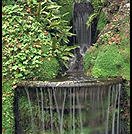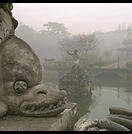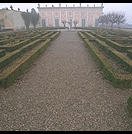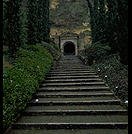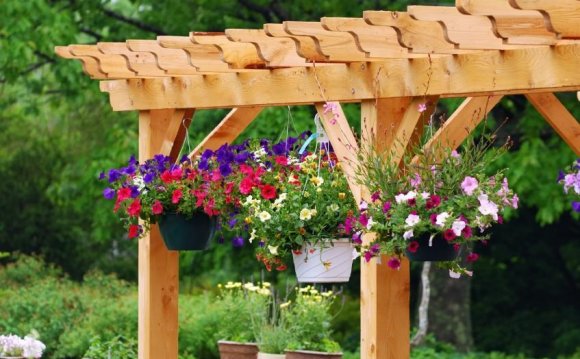
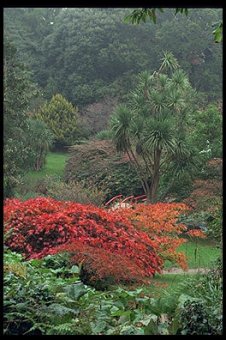 Wherever possible, show views framed by objects or structures within the garden:
Wherever possible, show views framed by objects or structures within the garden:
A general view of the garden works best if the image has a distinct foreground, middle ground, and background:
Here is an example of two "flat" images. The one on the left seems to be a failure photographically. The one on the right comparatively successful. How to explain the difference between the two images below? Perhaps the designer of the garden intended the right-hand view to be dwelt upon whereas the left-hand view is seen only from a path.
Here are a few more foreground-middle ground-background images that seem to work reasonably well...
If there is flowing water in the garden, a tripod and a slow shutter speed (1/4 second or longer) are best for capturing the spirit of the water:
If there are bridges in the garden, either capture the reflection or the path over the bridge:
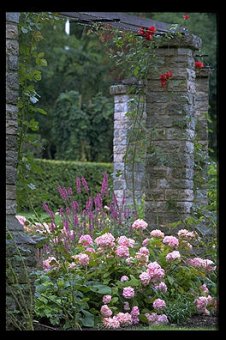 Check for underwater life... (some of these images would have been improved if taken with a polarizing filter to remove surface reflections)
Check for underwater life... (some of these images would have been improved if taken with a polarizing filter to remove surface reflections)
Get some images of single plants or flowers but remember that even a comprehensive inventory of these won't capture the design of a particular garden.
When photographing sculpture in the garden, try to capture as much of the context as possible. Your images shouldn't look the same as if you'd brought the sculpture into a photo studio.
Don't neglect interesting architectural details within the garden. Iron gates and stonework are particularly photogenic.
Try for color balance, remembering that red and yellow are two or three times visually more powerful than green or white. In the images below, note how easily red can overwhelm your eyes.
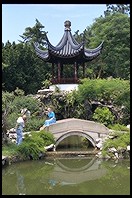 Practical Details
Practical Details
Whenever possible, use a tripod. Unless it is very windy, elements of a garden won't be moving around much and you'll get higher quality images as well as have the freedom to employ smaller apertures. The small apertures will give images a wider depth of field, i.e., more objects will be in focus from foreground to background.
If you can't use a tripod, make sure to pack relatively fast lenses (f/2.8 or faster) and ISO 400 film. Among the ISO 400 films, my favorites are professional color negative films, intended for weddings. These have less color saturation and contrast than consumer films and therefore will render distinct green tones more distinctly. Check the photo.net film page for our latest recommendations in professional ISO 400 negative film.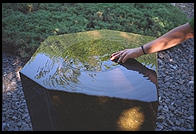 Most of the images on this page were taken with Fuji NPH or Kodak Portra 400NC film; click on the thumbnails for technical details. If you are using a tripod, you can indulge in the luxury of slide film. Again, pick one with a painterly palette and good separation among green tones.
Most of the images on this page were taken with Fuji NPH or Kodak Portra 400NC film; click on the thumbnails for technical details. If you are using a tripod, you can indulge in the luxury of slide film. Again, pick one with a painterly palette and good separation among green tones.
A 50mm lens on a 35mm SLR camera can be ideal for garden photography. It can focus close enough to isolate a plant. The normal perspective gives a viewer an accurate idea of what the garden will feel like. A 50/1.4 lens is fast enough to permit good photography without a tripod, assuming extensive depth of field is not required.
You can do some fun things with a wide angle lens. It is useful for exaggerating the structure of a formal European garden or getting a frame-filling picture of a sculpture while still including a lot of background. Here are a couple of examples taken with a 20-35mm zoom lens:
